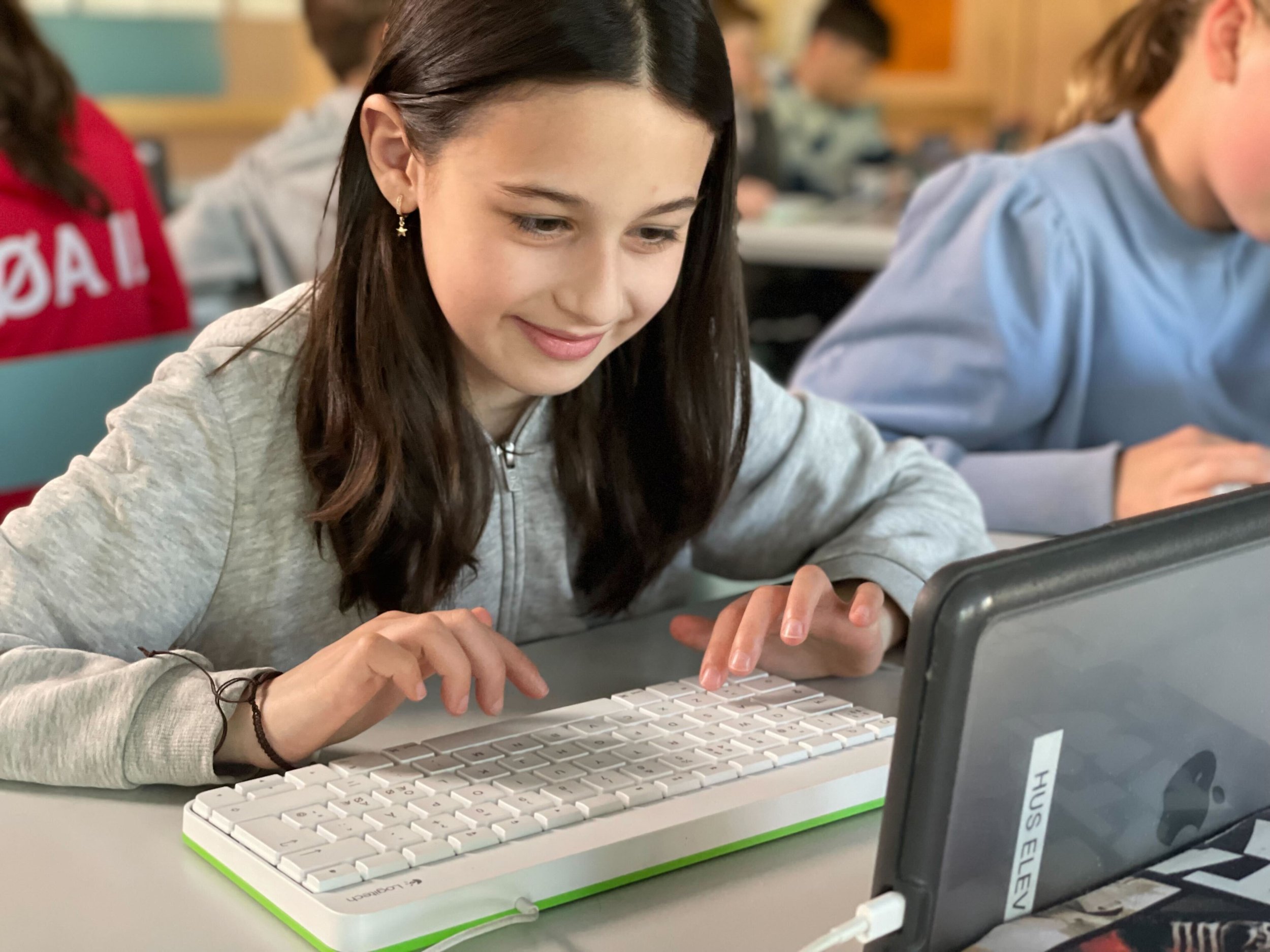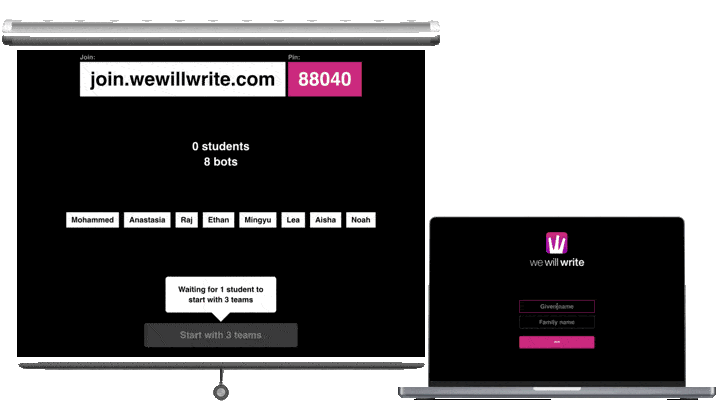Our learning principles
Guided by educational science, our principles provide focus and direction.
-
Our approach aligns with Lev Vygotsky's social constructivism, which emphasizes the importance of social interaction in learning. We foster a collaborative classroom where students learn faster through quick tasks and frequent feedback from peers and teachers. Utilizing a student-centered approach, we turn students' texts into practical examples, blending theory and practice for deeper understanding and significant learning gains.
Peer recognition boosts intrinsic motivation, extending their zone of proximal development, making teaching both easier and more effective.
By engaging in collaborative activities, students and teachers interact on a more personal level, building trust and mutual respect. This, as Parker J. Palmer notes, creates a more dynamic and meaningful learning environment for everyone involved. -
Albert Bandura, Paulo Freire and Carl Rogers all argue that learners are more likely to adopt positive behaviors and engage in the learning process when they feel secure and are not threatened by the possibility of failure or ridicule. By promoting anonymity and team-based competitions, we create a safer space for expressing their ideas, failure, and acceptance of constructive criticism.
It’s not just students who need to feel safe — teachers do too. Our advanced filtering and monitoring tools support teachers in maintaining a positive classroom environment, reinforcing good behavior and fostering a sense of safety that encourages openness to learning.
-
Inspired by John Dewey's "learning by doing" philosophy, we encourage creativity and flexibility in writing through playful, team-based competition. And by incorporating Jerome Bruner's spiral theory, our approach enables teachers to revisit key concepts in increasing depth, ensuring that students build upon their understanding progressively. This repetition within a playful game framework helps solidify knowledge while keeping the learning experience dynamic and enjoyable.
Writing class should be playful for the teacher as well. Inspired teachers who enjoy their work, as Parker J. Palmer discusses in "The Courage to Teach," spread their enthusiasm, creating a contagious and vibrant learning atmosphere.
-
As teachers, we understand firsthand the pivotal role writing plays in shaping students' futures. We want to help students not just write – but write their own futures.
The challenges are clear: the literacy gap in society is widening, with 73% of students performing below proficient levels¹ in national writing assessments. Writing is complex, requiring critical thinking, creativity, and clarity, and teaching it effectively is just as challenging. Many teachers report receiving minimal preparation² in how to teach writing, leaving them feeling unprepared for this vital task.
There’s often a disconnect between what's outlined in educational standards and the realities in the classroom. Large class sizes, time constraints³ that limit writing instruction, and students who may struggle or show disinterest in writing compound the challenge. 45% of teachers² cite motivation as one of the biggest obstacles to teaching writing. We know motivating students who may already dislike writing can be tough – but it's not impossible.
We believe in an ecological approach⁴ to writing instruction. Technology isn’t a solution by itself; it’s the rich soil where a culture of collaboration and creativity grows. Research shows that fostering a classroom environment where students write together, collaborate, and receive meaningful feedback can increase writing quality by 25%⁵. This community aspect of writing not only engages students but also supports their social and emotional growth.
To help students improve, they must first enjoy the process. Recognizing effort, progress, and strategy⁶ is key to developing a growth mindset. When students feel seen and acknowledged, motivation follows naturally. Our goal is to help you create a classroom culture where students flourish through writing – supporting one another, celebrating progress, and seeing writing as a joy, not a task.
Let's put the ‘fun’ back into writing fundamentals – for both students and teachers. When the classroom is filled with enthusiasm and a shared sense of achievement, students will look forward to writing, and you’ll find renewed excitement in teaching it. Together, we can bridge the gap in writing proficiency and make writing something everyone looks forward to.
Citations
Bringing our principles to life
We blend a variety of proven methods – such as Short Bursts Writing, Think-Pair-Share, Frequent Teacher Feedback, Peer Review, Inductive Learning, and Gamification.
Write individually
Anonymous team competition encourages safe, fear-free participation, boosting engagement and reducing anxiety.
Read in groups
Peer assessment and reflection promotes social learning and enhances understanding through collaborative evaluation and feedback.
Evaluate together
Teacher-Led analysis provides a playful, interactive environment for guided discussions, sparking insights and connecting theory to practice.
How to use it
A step-by-step guide for teachers
Step 1: Plan
-
Based on your class's skill level, simply choose a challenge from our vast library of inspiring topics, customize one, or create your own challenge from scratch.
-
Give the game a test run in the browser and plan how you will engage your students in class.
-
Prepare ahead of a new semester by placing your challenges into folders with relevant topics, making them ready-to-go when your students arrive.
Step 2: Play
-
Introduce the challenge and motivate the students to articulate their thoughts. Students join with a PIN code and their names, anonymous to each other but visible to you. No student log-ins needed!
-
Divided into random teams, students have a time limit (2-5 min), which keeps them focused on short bursts of writing. Hints and short peeks of their teammates’ work inspire ideas as they write!
-
Texts with inappropriate terms or a classmate’s name are automatically removed. Then, students vote between two texts to represent their team in the finals.
-
Read the text of each team's finalist out loud, assisted by our AI tool to highlight literary devices. Their teacher can replace any text that doesn’t meet expectations. Then, all students vote for their favorite and celebrate the winner together. At the very end, students can copy all of their responses to the clipboard to further develop their ideas.
Step 3: Review
-
Allocate time for a class discussion about the writing challenges. Encourage students to share their experiences and what they learned.
-
Why not let students finish their texts in your school's text editor? Alternatively, encourage teams to weave their text fragments together into a single, coherent story.
-
Track each student's progress and engagement level over time to see how they develop as writers.
AI to empower teachers
never to shortcut learning
To inspire
Crafted by educators, our challenges are enhanced with visual AI to inspire creativity and engagement.
To learn
In a friendly team competition, students are challenged by tips to wonder, listen, read, think, write, and refine their ideas.
To protect
Our text-filtering tools help teachers foster a positive classroom environment.







